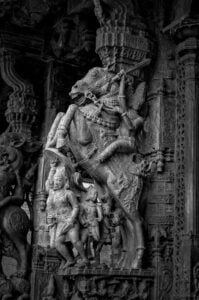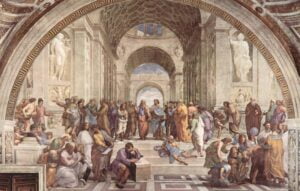Art is a reflection of human expression and creativity, with various styles emerging throughout history to capture different perspectives, emotions, and ideas. From the lifelike portrayals of realism to the bold abstractions of abstract expressionism, each art style offers a unique lens through which artists interpret and engage with the world around them. In this article, we’ll embark on a journey to explore some of the most influential art styles throughout history, delving into their characteristics, notable artists, and lasting impact on the art world.
Introduction to Art Styles
What Are Art Styles?
Art styles encompass a wide range of artistic movements, techniques, and approaches used by artists to create visual representations of their ideas, experiences, and observations. These styles often reflect cultural, social, and philosophical influences, shaping the aesthetics and themes of artworks across different periods and regions.
Importance of Exploring Various Art Styles
Exploring different art styles not only broadens one’s understanding of art history but also fosters creativity and innovation. By studying diverse artistic movements and techniques, artists can expand their visual vocabulary, experiment with new approaches, and find inspiration for their own artistic practice.

Characteristics of Realism
Realism emerged in the 19th century as a reaction against romanticism, emphasizing accurate depiction of the natural world and everyday life. Realist artists sought to capture the world as it appeared, often portraying scenes of urban and rural life with meticulous detail and fidelity to reality.
Artists Known for Realism
Prominent realist artists include Gustave Courbet, known for his gritty depictions of rural life in France, and Winslow Homer, celebrated for his poignant portrayals of American life and landscapes.
Impressionism: Painting the Moment

Characteristics of Impressionism
Impressionism originated in France in the late 19th century, challenging traditional artistic conventions with its emphasis on capturing fleeting moments of light, color, and atmosphere. Impressionist artists favored loose brushwork, vibrant colors, and plein air painting techniques to convey the sensory experience of the natural world.
Notable Impressionist Artists
Key figures of the impressionist movement include Claude Monet, renowned for his series of paintings depicting the changing light and atmosphere of his garden in Giverny, and Edgar Degas, known for his dynamic compositions of ballet dancers and everyday scenes of Parisian life.
Cubism: Breaking Down Reality

Features of Cubism
Cubism, pioneered by Pablo Picasso and Georges Braque in the early 20th century, revolutionized the way artists represented the world by breaking down forms into geometric shapes and fragmented planes. Cubist artworks often feature multiple viewpoints and abstracted forms, challenging viewers to rethink their perception of reality.
Influential Cubist Artists
In addition to Picasso and Braque, other influential cubist artists include Juan Gris, known for his intricate compositions and subtle color harmonies, and Fernand Léger, celebrated for his dynamic depictions of modern urban life.
Surrealism: Unleashing the Subconscious

Surrealist Techniques
Surrealism emerged in the early 20th century as a literary and artistic movement aimed at exploring the realm of dreams, the unconscious mind, and the irrational. Surrealist artists employed techniques such as automatic drawing, collage, and juxtaposition of disparate elements to unlock the mysteries of the subconscious.
Famous Surrealist Artists
Leading figures of the surrealist movement include Salvador Dalí, celebrated for his surreal landscapes and melting clocks, and René Magritte, known for his enigmatic paintings of everyday objects imbued with uncanny juxtapositions and symbolic imagery.
Abstract Expressionism: Emotion on Canvas
Key Elements of Abstract Expressionism
Abstract Expressionism emerged in New York in the 1940s and 1950s as a powerful and innovative artistic movement characterized by gestural brushwork, expressive use of color, and spontaneous, intuitive mark-making. Abstract expressionist artists sought to convey emotion, energy, and personal expression through their art, rejecting representational forms in favor of pure abstraction.
Prominent Abstract Expressionist Artists
Leading figures of abstract expressionism include Jackson Pollock, known for his dynamic drip paintings that revolutionized notions of artistic process and gesture, and Willem de Kooning, celebrated for his bold, gestural canvases exploring themes of figuration and abstraction.
Pop Art: Celebrating Popular Culture
Characteristics of Pop Art
Pop Art emerged in the 1950s and 1960s as a response to the growing influence of mass media, consumer culture, and celebrity in postwar America. Pop artists appropriated imagery from popular culture and consumer products, recontextualizing them in vibrant, bold compositions that blurred the boundaries between high and low art.
Iconic Pop Artists
Key figures of the pop art movement include Andy Warhol, renowned for his iconic images of Campbell’s soup cans, Marilyn Monroe, and Coca-Cola bottles, and Roy Lichtenstein, known for his comic book-inspired paintings and Ben-Day dot technique.
Minimalism: Less is More
Principles of Minimalism
Minimalism emerged in the 1960s as a reaction against the excesses of abstract expressionism and pop art, advocating for simplicity, purity, and economy of form. Minimalist artists sought to strip away unnecessary elements, focusing on essential shapes, materials, and concepts to create works that invited contemplation and introspection.
Notable Minimalist Artists
Prominent minimalist artists include Donald Judd, known for his sleek, geometric sculptures made from industrial materials such as steel and Plexiglas, and Agnes Martin, celebrated for her serene, grid-based paintings that explore themes of repetition, rhythm, and transcendence.
Art Nouveau: Beauty in Nature
Features of Art Nouveau
Art Nouveau, or “new art,” flourished in the late 19th and early 20th centuries as a decorative art movement characterized by sinuous lines, organic forms, and intricate patterns inspired by nature. Art Nouveau artists sought to integrate art into everyday life, applying their designs to architecture, furniture, jewelry, and decorative objects.
Renowned Art Nouveau Artists
Key figures of the Art Nouveau movement include Alphonse Mucha, known for his iconic posters featuring elegant, stylized figures and ornate floral motifs, and Hector Guimard, celebrated for his innovative designs for the entrances to the Paris Métro stations, characterized by their sinuous, organic forms and wrought iron construction.
Post-Impressionism: Beyond Impressionism
Distinctive Traits of Post-Impressionism
Post-Impressionism emerged in the late 19th century as a diverse and experimental art movement that built upon the innovations of impressionism while pushing the boundaries of color, form, and expression. Post-Impressionist artists explored subjective interpretations of reality, emphasizing emotional and symbolic content over naturalistic representation.
Notable Post-Impressionist Artists
Leading figures of the post-impressionist movement include Vincent van Gogh, celebrated for his expressive use of color and bold, dynamic brushwork in paintings such as “Starry Night” and “Sunflowers,” and Paul Cézanne, known for his innovative approach to form and composition, laying the groundwork for the emergence of cubism and modern art.
Conclusion: Embrace the Diversity of Art Styles
Art is a vast and diverse landscape, encompassing a multitude of styles, movements, and perspectives that reflect the richness and complexity of human experience. By exploring different art styles, we gain insight into the cultural, social, and artistic currents that have shaped our world and continue to inspire and challenge us today.
Whether you’re drawn to the realism of Courbet, the dreamlike landscapes of Dalí, or the bold abstractions of Pollock, there is a wealth of artistic expression waiting to be discovered and appreciated. So embrace the diversity of art styles, celebrate the creativity of artists past and present, and let your imagination soar as you embark on your own journey of artistic exploration and discovery.
FAQs
1. How can I explore different art styles as an artist?
- Start by researching different art movements, studying the works of artists across various styles, and experimenting with different techniques and mediums in your own practice.
2. What are some benefits of exploring diverse art styles?
- Exploring diverse art styles can broaden your artistic vocabulary, inspire new ideas and approaches, and deepen your appreciation for the richness and diversity of artistic expression.
3. How can I incorporate elements of different art styles into my own artwork?
- Experiment with combining elements of different art styles in your artwork, drawing inspiration from various movements and artists to create something unique and personal.
4. Are there any online resources or courses for learning about different art styles?
- Yes, there are many online resources, courses, and tutorials available for learning about different art styles, including art history websites, virtual museum tours, and online art classes.
5. Can exploring different art styles help me find my own artistic voice?
- Yes, exploring different art styles can help you discover your own artistic interests, preferences, and unique voice by exposing you to a wide range of techniques, themes, and approaches to art-making.




